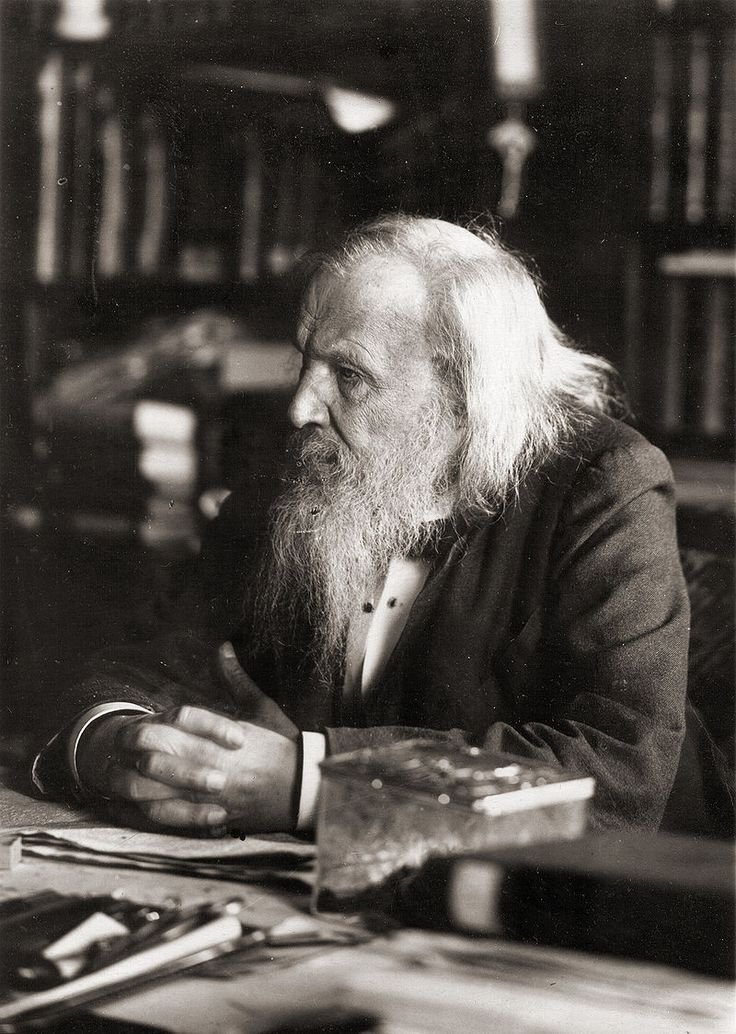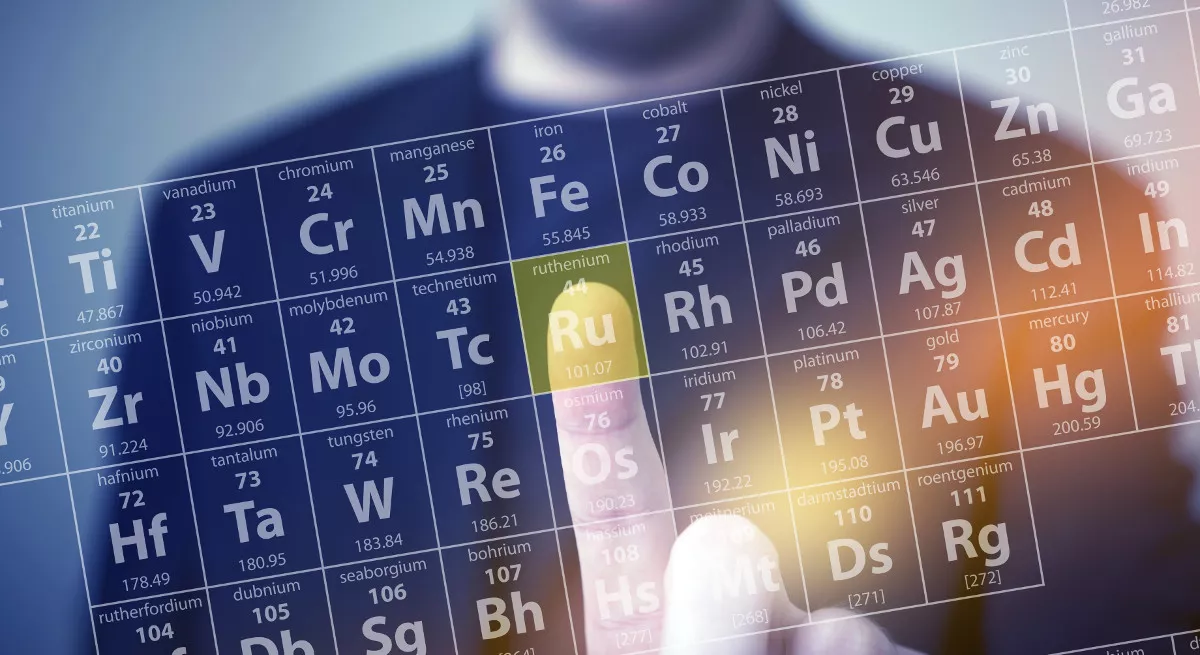
1871 Russian chemist Dmitri Mendeleev devised a more useful and comprehensive scheme for classifying elements. He presented the first regular periodic table in which elements of similar chemical properties were arranged into groups and periods. The vertical column was called Groups. The horizontal rows of the table were called Periods. There are eight (8) groups and twelve (12) Periods in Mendeleev’s periodic table.
Mendeleev’s Periodic Law
” If the elements are arranged in ascending order of their atomic masses, their chemical properties repeat periodically”. The recurrence or reappearance of properties after regular intervals is called periodicity.
Advantages of Mendeleev’s Periodic Table
Some important contributions of Mendeleev’s Periodic Table are:
1. Convient and Systmatic study of elements
Mendeleev made the study of elements quite convenient. Knowing the properties of one element in the group, the properties of the other element in the group can be guessed. Thus, it becomes very useful in studying and remembering the properties of a large number of elements.
2. Suggestion of a missing element
Mendeleev left many vacant places in his periodic table for the unknown elements. He predicted the properties of these undiscovered elements based on their positions. For example, he predicted the properties of Scandium, Galium, and Germanium, which were discovered later. The observed properties of these elements were found to be similar to those predicted by Mendeleev.
3. Correction of doubtful atomic masses
Mendeleev corrected the atomic masses of many elements and placed these elements in their proper positions in the periodic table. For example, the atomic mass of Beryllium was corrected from 13.5 to 9. With the help of this table, atomic masses of Inium, Gold, Platinum, etc. were corrected.
4. Groups and Periods
Mendeleev distributed elements into groups and periods depending on similarities in properties. The vertical columns were called Groups, and the horizontal rows of the table were called Periods.
5. Valency of Elements is given by group number.
Mendeleev’s classification helped in understanding the valence of elements. The valency of the elements is given by the group number.
Defectives in Mendeleev’s Periodic Table
Inspite of its useful role in study of Chemistry, Mendeleev’s Table have many drawbacks. Some of these drawbcaks are described below.
1. No idea about Electronic Configuration
Mendeleev’s table does not give an idea about the electronic configuration.
2. The position of hydrogen is not clear
Hydrogen is placed in Group IA. however, it actuall resembles the elements of Group IA( alkali metals), elements of Group VIIA ( halogens). Thus, the position of hydrogen in the periodic table is not clear.
3. No place for Isotopes
Based on atomic weight, various isotopes of the same elements should be assigned different places in the periodic table. Mendeleev could not provide separate places for isotopes.
4. Position of Rare Earths
Fourteen elements following lanthanum (known as Lanthanides) and the fourteen elements following Actinium ( known as Actinides or transuranic) have not been provided separate and proper places in Mendeleev’s table; rather, they have been placed in two rows at the bottom of the table
5. Wrong Position of Coinage metals and Mn
Noble metals like Cu, Ag, and Au are placed along with chemically dissimilar alkali metals in Group I. Similarly, Mn, possessing very few similarities with halogens, has been placed in the VII group.
6. Similar elements are placed in different groups
In Mendeleev’s periodic table, certain chemically similar elements such as copper and mercury, gold platinum have been placed in different groups.
7. Misfit pairs
In Mendeleev’s Table, based on atomic weight, the positions of certain pairs, e.g.Argon ( at wt=39.94) and Potassium ( at. wt=39.1), Cobalt ( at wt=58.93_ and Nickel ( atomic weight=58.71, Tellurium( atomic weight=127.60_ and iodine( atomic weight= 126.90 would be reversed. In other words, certain parts of elements are misfit in the periodic table, if atomic weight is the basis of classification. Metals or non-metals are not separately placed.
Improvements in Mendeleev’s Periodic Table
An English scientist, Mosely, in 1913 proved that atomic number is the fundamental property. He made the following improvements.
1. Electronic Structure of Atoms
The elements were arranged in increasing order of their atomic number, irrespective of their isotopes, instead of their atomic masses. Each element has its atomic number, so valuable information is given about the electronic structure of atoms.
2. Addition of Group VIIIA
An extra group, i.e., VIIIA, was added at the extreme right of the periodic table for the arrangement of Noble gases. These gases had not been discovered in Mendeleev’s time.
3. Two types of Sub-groups, A and B(Normal and Transformation elements)
In Mendeleev’s Periodic Table, the elements like Be, Mg, Ca, Sr, Ba, Zn, Cd, Hg were placed in a single vertical group II, although they possess different properties. This confusion was removed by dividing the elements into two types of vertical sub-groups, A and B. One for normal elements, i.e,. Group IIA and the other for the elements transition elements, i.e, group IIB ( Zn, Cd, Hg).
4. Position of all Isotopes
If the elements are arranged in the order of their increasing atomic masses, it is not possible to accommodate a large number of isotopes. This problem was solved by arranging elements in ascending order of their numbers. Isotopes of an element occupy the same position based on the modern periodic law.
5. Correction in the position of misfit pairs
Anomalous pairing can be rectified by arranging them in increasing order of their atomic numbers. For example, Ar should be placed before K. Similarly, Co should be placed before Ni.
Conclusion
We appreciate the work of Mendeleev, but today’s Modern periodic table was mostly referred to and used, which was given by Moseley. However, Mendeleev gives more information about the periodic table according to his research and his experiments. On his research base Mendeleev was awarded by Nobel Prize.


